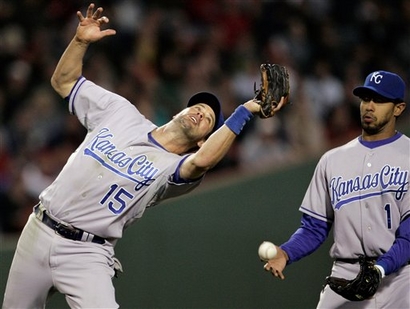 Remembering Yankee Stadium
Remembering Yankee Stadium: An Oral and Narrative History of the House That Ruth Built, 1923-2008, by Harvey Frommer
Harvey Frommer has outdone himself this time.
The Ivy League professor and celebrated and accomplished author of such works as Rickey and Robinson, Growing Up Baseball and A Yankee Century was humble enough to admit he could not tell the story of Yankee Stadium all by himself. An edifice of this magnitude, an icon of this importance, and a history this varied would require several voices to weave the tapestry of its lifetime. Frommer knew that the story of Yankee Stadium would best be told by the people who lived it, and not just by the writers and players, but by fans, hot dog and ticket vendors, broadcasters, coaches, executives, and even bloggers, though sadly none of my stories appear in the book.
Don't get me wrong: I had my chance. Frommer solicited help from anyone who would offer it, including anyone on his email list, and I could have submitted something. Alas, the book is probably better without my self-absorbed, incoherent rambling anyway. That's why I have a blog!
Remembering that I'm supposed to be writing a book review...Remembering Yankee Stadium is truly a wonderful book. For one thing, it's huge, an inch thick and 10" x 11" hardcover, with lots of photographs, many of which span both pages, meaning that they're almost two feet across when the book is opened flat. Some of these are team photos, or panoramic views of crowds in the stands, or of crowds out of the stands, rushing the field after a playoff victory. One shows Reggie connecting for his third homer of that 1977 World Series game, but the best is a full, 2-page shot of Mickey Mantle's follow-through on a home run swing. Simply classic.
There are lots of smaller photos as well, of course, from Ruth and Gehrig and Muesel to DiMaggio and Gordon and Heinrich to Martin and Mantle and Maris and Ford to Nettles and Chambliss and Reggie and Gator and Donnie Baseball and Bernie and Rocket and Pettitte and Moose and Jeter and A-Rod. Some of the famous and/or controversial plays are detailed four images on a page, showing the play in question as it unfolded. World Series programs and tickets are shown, including ones that have been blown up to make the inside front and back covers, not to mention all of the "inside" shots from the clubhouse and behind the scenes.
But my favorite from the whole book is on page 87, and it's this one:

Seeing those imperfections and knowing that this one came from the Hall of Fame makes me wonder who took it, and when, and who's had it for the last 50 or 60 years. Where did that tear come from? Was this in a shoebox in some reporter's closet, forgotten for 30 years? Did somebody's kid rip it accidentally, or did it happen in transit? Did Harvey do it? Was Cooperstown pissed? These kinds of questions come up, not just with this photo, but with nearly every one of those old photos and ticket stubs and programs, and that's most of the fun of paging through this book: Pondering who else has seen these images, who helped to create them and what they were thinking at the time.
And if those were not enough, the stories that have come from more than three quarters of a century in perhaps the most famous sports venue in history, as told by the people who lived them, make this book that much better. Frommer weaves the hundreds of stories shared by dozens of people into his own narrative of the history of the ballpark, to give you a personal feel for a myriad of moments throughout the history of this storied franchise and its famed home.
There are stories from Bobby Richardson and Brooks Robinson, Rollie Fingers and Whitey Ford, Jon Miller and Bob Wolff, Michael Dukakis and Rudy Guliani, Jim Bouton, Roger Kahn, Ralph Houk, Frank Howard, Don Larsen, Phil Rizzuto, Rod Carew, Bill Lee, Dick Groat and Monte Irvin, just to name a few. There are dozens of others, including some you've never heard of, because they're just fans, like you and me. All these varied viewpoints help to paint a broad, detailed, multidimensional picture of this hallowed ground and the men and women who've walked and run on it. For Frommer, the master painter, this must be considered his masterpiece.



















